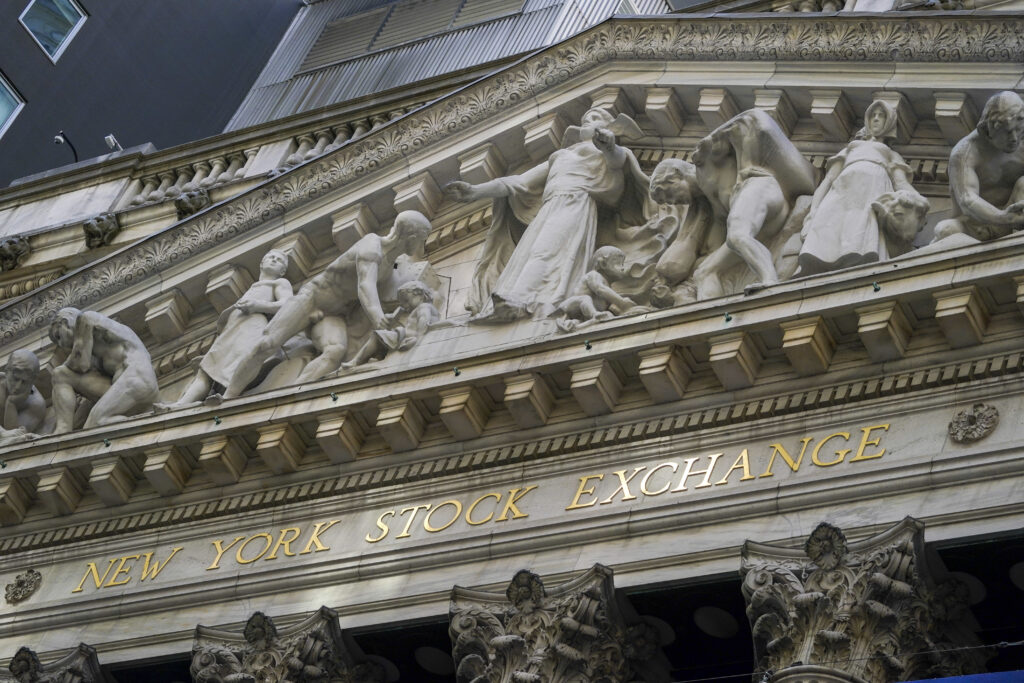The U.S. 10-year Treasury yield on Thursday reached its highest in 10 months, underpinned by fears that U.S. interest rates might stay higher for longer, contributing, along with China’s economic woes, to world stocks languishing at five-week lows. Benchmark 10-year yields reached 4.312%, testing October’s 4.338%, a break past which would be its highest since 2007. The Associated Press has the story:
Wall Street rises in early trading, bond yields remain high
Newslooks- NEW YORK (AP)
Stocks are opening slightly higher on Wall Street following some encouraging profit reports from big companies. The S&P 500 was up 0.3% early Thursday, trimming its slump for August. The Dow rose 94 points and the Nasdaq composite rose 0.2%. Cisco Systems helped lead the way with a gain of 3.6%. The maker of networking products reported stronger profit and revenue for the latest quarter than analysts expected. Stocks have been retreating in August following a torrid first seven months of the year. A swift rise in bond yields is forcing a reassessment of how much to pay for stocks.
Wall Street pointed modestly higher before the opening bell Thursday after two straight days of losses with the U.S. economy appearing to chug along despite the odds that the Federal Reserve is not done raising interest rates.
Futures for the S&P 500 rose 0.2% before the bell Thursday and the Dow Jones Industrial Average inched up 0.1%.
Minutes from the Fed’s latest meeting released Wednesday suggested that board members are unsure of their next move after raising their key lending rate to a two-decade high. Traders had hoped the board would decide inflation was under control and last month’s rate hike was the last.
Inflation has slowed significantly since the central bank started its rate-raising campaign a year-and-a-half ago, but with consumer prices up 3.2% year-over-year, it’s still higher than the Fed’s target of 2%. Despite the furious pace of rate hikes, the labor market is robust and Americans remain the economic engine for the U.S. as they continue to spend.
The Fed’s goal in raising rates is to tighten the labor market, slow wage growth, and cool the economy without triggering a recession.
Fed officials face a “tough balancing act” between “the risk of an inadvertent over-tightening of policy against the cost of an insufficient one,” said Tan Boon Heng of Mizuho Bank in a report.
Fed Chair Jerome Powell said Wednesday that the Fed staff no longer projects a recession this year but sees an economic slowdown with risks to growth tilted to the downside and risks to inflation tilted to the upside.
Wall Street has retrenched this month on such concerns and expectations interest rates might stay high for longer than expected.
An unexpectedly strong report on U.S. retail sales on Tuesday helped trigger the two-day slide by suggesting there still is upward pressure on prices. Confirming the strength of that data, retailers this week have been reporting better-than-expected earnings.
Walmart reported strong second-quarter sales results Thursday as the retailer’s low-price model continues to attract budget-conscious consumers. Shares rose 2% before the bell as the nation’s largest retailer boosted its annual outlook again.
That differed from data released this week by Home Depot and Target, which both saw sales decline.
At midday in Europe, the FTSE 100 in London fell 0.4%, while the CAC 40 in Paris and the DAX in Frankfurt were each down less than 0.1%.
In Asia, the Shanghai Composite Index gained 0.4% to 3,163.73, recovering from a loss in morning trading. The Nikkei 225 in Tokyo retreated 0.4% to 31,626.00 and the Hang Seng in Hong Kong was off less than 0.1% at 18,308.06.
The Kospi in Seoul shed 0.2% to 2,519.85 and Sydney’s S&P-ASX 200 declined 0.7% to 7,146.00.
India’s Sensex lost 0.6% to 65,139.93. Bangkok gained while New Zealand and other Southeast Asian markets retreated.
On Wall Street, the bond market is drawing money out of stocks as rising interest rates increase the yield, or the difference between the market price and the payout at maturity.
Yields widened further after the release of Fed notes increased expectations of another possible rate hike. When safer bonds pay higher returns, investors often feel less incentive to buy stocks, which have more volatile prices.
The yield on the 10-year Treasury rose to 4.29% from 4.27% late Wednesday. It is once again close to where it was when the 2007-09 Great Recession sent interest rates crashing. The 10-year yield helps set rates for mortgages and other important loans.
The 10-year Treasury Inflation Protected Security, which takes inflation into account, is at its highest level since 2009, according to Tradeweb.
In energy markets, benchmark U.S. crude rose 69 cents to $80.07 per barrel in electronic trading on the New York Mercantile Exchange. The contract fell $1.61 on Wednesday to $79.38. Brent crude, the price basis for international oils, advanced 71 cents to $84.16. It retreated $1.44 the previous session to $83.45 a barrel.
The dollar declined to 145.78 yen from Wednesday’s 146.24 yen. The euro gained to $1.0897 from $1.0868.
On Wednesday, Wall Street’s benchmark S&P 500 lost 0.8%, the Dow lost 0.5% and the Nasdaq composite dropped 1.1%.







